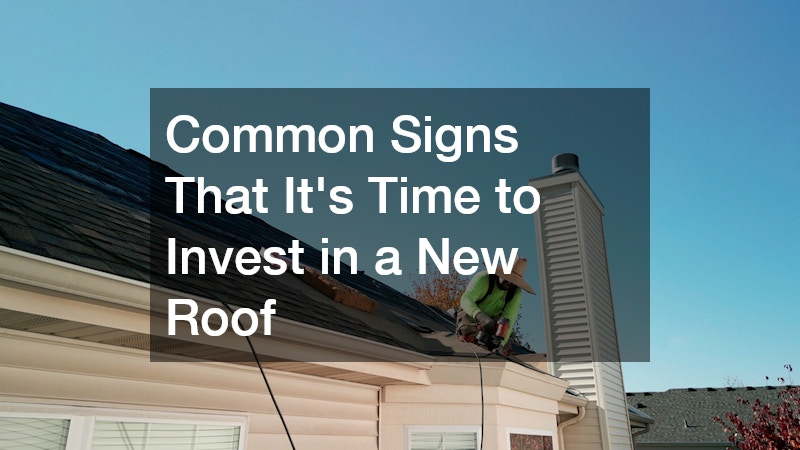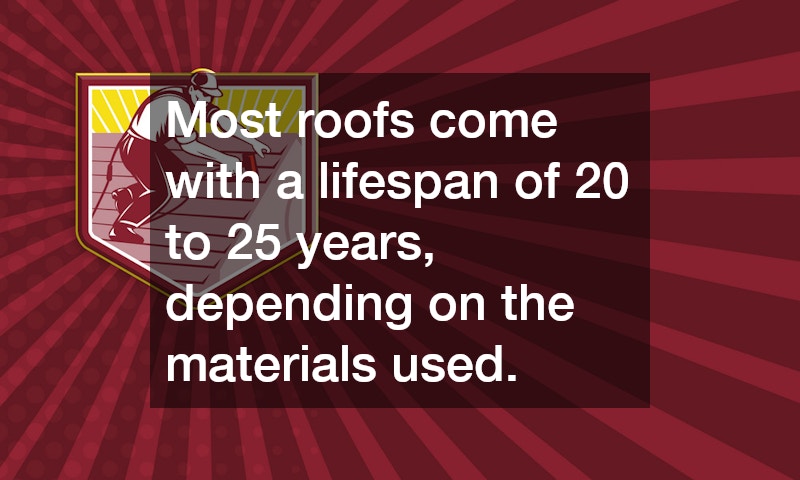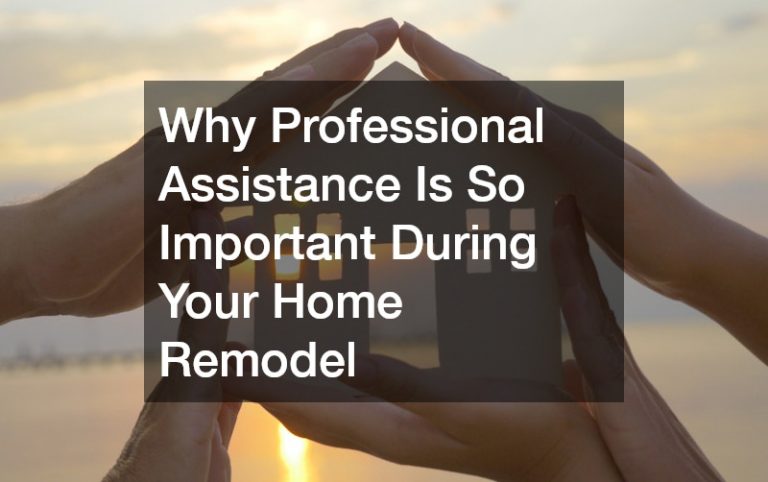

A roof is one of the most critical components of any home. It acts as a shield against the elements, providing protection and comfort year-round. Over time, however, even the most meticulously constructed roofs can wear out, necessitating repairs or a full roof replacement. Recognizing the signs that it’s time for a new roof can save homeowners money and headaches in the long run.
Your Roof’s Age is Showing
Most roofs come with a lifespan of 20 to 25 years, depending on the materials used. If your roof is nearing or has surpassed this age, it could be time to consider a roof replacement. Even if the roof appears to be in decent shape, aging materials can be more susceptible to damage from weather events. Additionally, older roofs were constructed with technology and materials that may not meet today’s standards for energy efficiency or safety. Regular inspections can help identify issues, but eventually, a complete overhaul may be the most cost-effective and safest option.
Age isn’t just a number when it comes to roofing; it indicates the cumulative effects of weather, temperature fluctuations, and regular wear and tear. With age, shingles can become brittle, less effective at shedding water, and more prone to tearing or breaking off. An aged roof might also exhibit curling or buckling shingles, which are signs of potential structural failure. Even without visible signs of damage, an old roof can have compromised underlying materials. If your roof’s edges appear worn or if you notice granule loss from the shingles, it’s time to plan for a timely roof replacement.
Often, manufacturers will offer warranties that give insight into the expected longevity of your roof. Understanding these warranties and how they apply to your specific roof is critical. If your warranty is due to expire soon, this might be the perfect opportunity to assess whether a new installation could offer better terms and new benefits. The investment in new roofing materials often brings peace of mind along with improvements in energy efficiency and aesthetics. Knowing your roof’s age and reviewing warranty details are vital steps in deciding when to replace it.
Visible Damage and Leaks
One of the most apparent signs that you need to invest in a new roof is the presence of visible damage or leaks. Water stains on your ceiling or moisture in the attic are clear indicators that the integrity of your roof has been compromised. Although small leaks might be repairable, widespread moisture issues can lead to significant structural damage and health risks, such as mold growth. Shingles or tiles that are cracked, missing, or visibly damaged demand immediate attention. Swift replacement can prevent escalating repair costs and protect your home’s interior from water damage.
Alongside leaks, you might also notice damage in the roof’s underlayment or flashing. These components are crucial for keeping water out, and if they’re faulty, even the best roof covering won’t be able to protect your home effectively. Rusted or damaged flashing around chimneys, vents, and valleys should be taken seriously, as these are often the first places leaks develop. If you suspect a problem, hiring a professional roof inspection can provide clarity on the extent of the damage and guide you on the right path toward a solution. Investing in a new roof not only fixes present issues but also fortifies your home against future weather impacts.
Wind damage is another factor that cannot be ignored. High winds can easily lift shingles, breaking their seal and letting water in. This type of damage might not be as easy to spot from the ground, but it’s a severe threat to the integrity of your roof. Routine checks after storms and inclement weather can provide early warning signs, allowing you to engage in preventative maintenance or pursue a replacement as needed. While minor repairs might suffice at first, a consistent pattern of damage and repair typically indicates it’s time for a full roof replacement.
Increasing Energy Bills
Surprisingly, a failing roof can also be the culprit behind consistently rising energy bills. A well-insulated roof helps in maintaining the desired temperature within your home, allowing HVAC systems to work more efficiently. If your roof is compromised, with gaps, poor insulation, or deteriorated materials, it can lead to increased energy consumption as heating and cooling systems work harder to regulate indoor temperatures. Watching energy bills for unexpected spikes can provide clues about existing roofing inefficiencies. Investing in roof replacement could yield long-term savings by enhancing the energy efficiency of your home.
Modern roofing materials are far more energy-efficient compared to those made decades ago, offering improved insulation and reflective properties that keep your home cooler in summer and warmer in winter. If you’re constantly adjusting your thermostat or notice drastic temperature fluctuations in certain rooms, these could be signs your roof isn’t performing optimally. Paying attention to ventilation effectiveness can also shed light on potential issues. Poor ventilation not only affects your utility bills but can also lead to moisture build-up and related structural problems. A new roof installation includes updated materials that contribute to more effective thermal regulation.
Rising energy costs should never be ignored. By tackling the root cause—an inefficient roof—you can save money and reduce your environmental footprint in the long run. Given the escalating prices of utilities, a modern, well-installed roof is more of a necessity than an option for eco-conscious homeowners. Selecting roofing options with energy star ratings or environmentally friendly compositions can further enhance your home’s overall sustainability. A proactive approach to dealing with energy inefficiency ensures optimal performance and an improved living environment.
Moss and Algae Growth
While it might seem trivial, the growth of moss and algae on your roof is another indication that a roof replacement may be necessary. Moss thrives in environments that retain moisture, and this can lead to more significant issues, such as rot and decay of the underlying materials. Over time, this biological growth can lift shingles and cause gaps where water can seep in. Algae, on the other hand, appear as black streaks and can affect the aesthetic appeal and potentially the structural integrity of your roof. Removing moss and algae may offer a temporary fix, but it will not resolve the underlying issues.
The build-up of moss and algae often indicates that your roof retains water longer than it should. This excess moisture can weaken shingles and other roofing materials, providing a perfect breeding ground for mold as well. The presence of such growth is often a sign of insufficient sunlight or poor drainage, both of which are problematic. Evaluating the cause of these issues is crucial to determine whether an underlying structural flaw exists. A new roof can incorporate design best practices, including improved water drainage and material choices that resist biological growth.
Regular maintenance is essential to address moss and algae before they cause significant damage. If left unchecked, these growths can accelerate the need for a roof replacement. While routine cleaning can manage visible signs, a long-term solution often involves replacing affected roof sections or the entire roof with more resistant materials. By selecting roofing options that are less hospitable to moss and algae, you contribute to the longevity and durability of your new installation. Proactively solving these issues ensures your roof remains in peak condition, safeguarding both the functionality and aesthetics of your home.
Identifying the common signs that necessitate a roof replacement is critical for maintaining your home’s safety, aesthetic value, and functionality. Recognizing issues like roof age, visible damage, rising energy bills, and biological growth early allows you to make informed decisions about roof replacement. Investing in a new roof may initially seem daunting, but the long-term benefits of preventing damage and optimizing energy efficiency far outweigh the initial costs. Regular roof inspections and maintenance are essential to prolonging the life of your roof and ensuring its optimal performance. By prioritizing early interventions, homeowners can protect their investment and ensure a secure, comfortable living environment for years to come.



